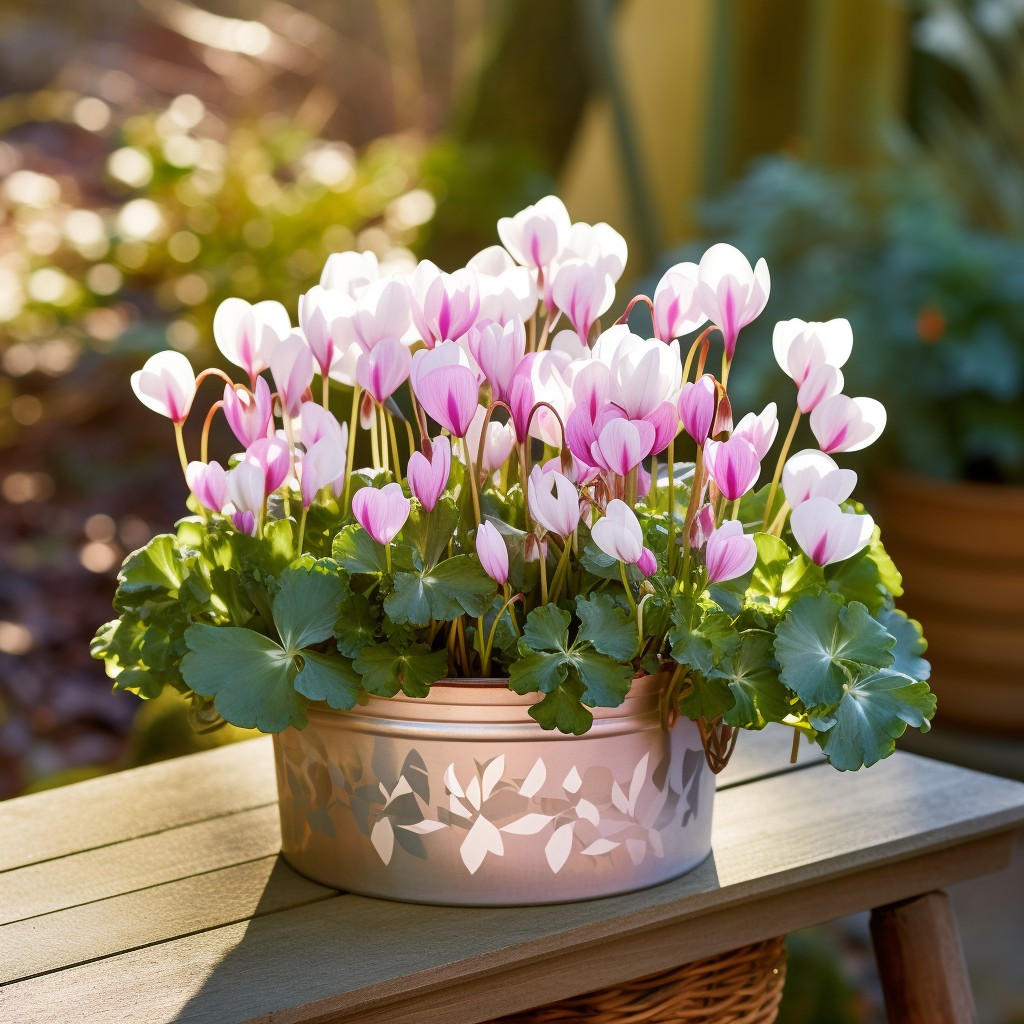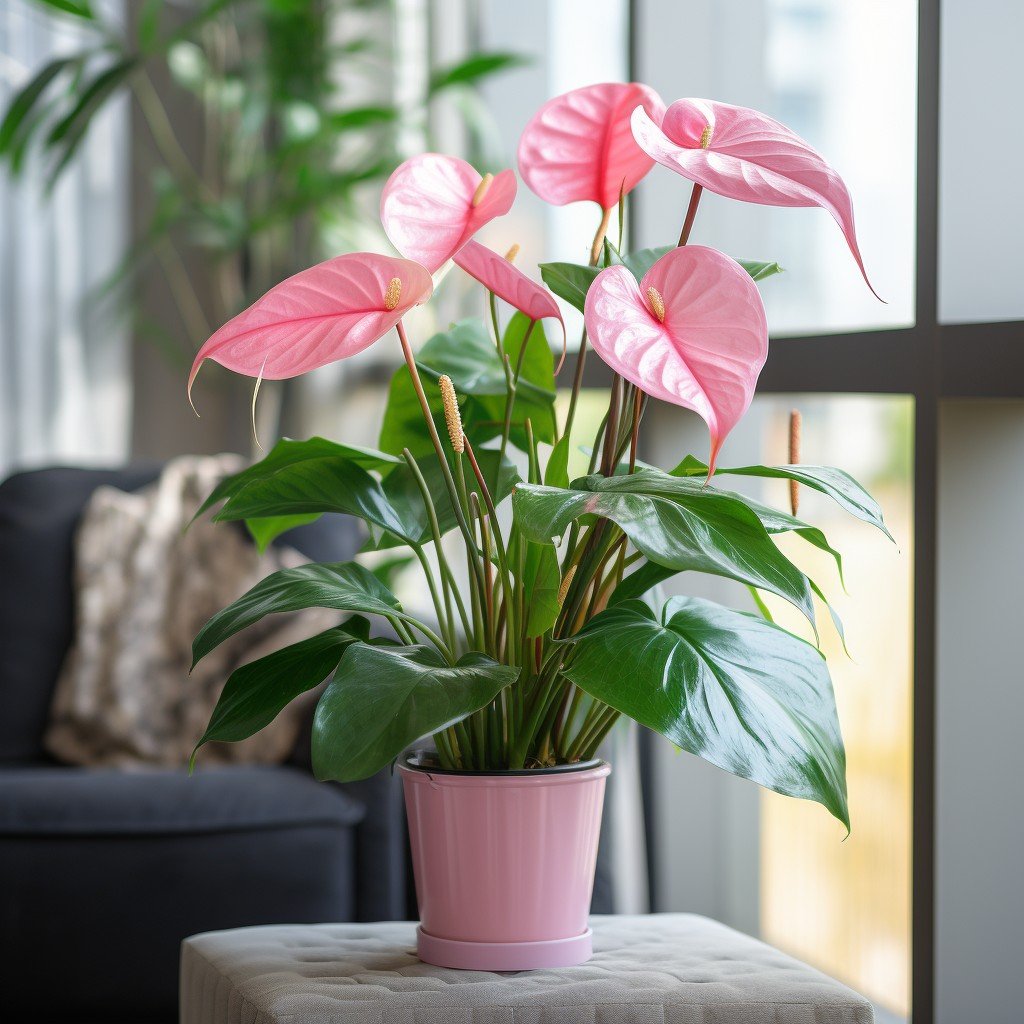Indoor flowering plants add beauty and color to your home. They can also improve air quality and boost your mood.
Finding the best indoor flowering plants can be a bit tricky. Not all plants thrive indoors, and some need special care. But with the right choices, you can enjoy vibrant blooms all year round. Whether you’re new to gardening or a seasoned plant lover, indoor flowering plants can bring life to your living space.
In this guide, we’ll explore some top picks that are easy to grow and maintain. Get ready to transform your home into a blooming paradise.
Introduction To Indoor Flowering Plants
Discover the best indoor flowering plants that bring beauty and color to your home. Explore options like peace lilies, African violets, and orchids for easy care and vibrant blooms. Enhance your indoor space with these lovely plants.
Indoor flowering plants can brighten any space. They add beauty and life to your home. These plants are easy to care for and can thrive indoors. They offer a splash of color and fresh fragrance. Whether you have a green thumb or are a beginner, indoor flowering plants are a great choice.
Benefits Of Indoor Flowering Plants
Indoor flowering plants improve air quality. They absorb toxins and release oxygen. This creates a healthier environment. These plants also reduce stress. Their presence can make you feel calm and relaxed. Indoor flowering plants can also boost your mood. The vibrant colors and pleasant scents can make you feel happier.
Choosing The Right Plants
Consider your space. Some plants need more light, while others thrive in shade. Think about your care routine. Some plants need frequent watering, others do not. Choose plants that match your lifestyle. Popular options include African Violets, Peace Lilies, and Orchids. Each has unique needs and adds a special touch to your home.
“`
Peace Lily
The Peace Lily, also known as Spathiphyllum, is a popular indoor flowering plant. Its lush green leaves and elegant white blooms make it a favorite choice for many. The Peace Lily not only enhances the aesthetic of your home but also purifies the air, making it a great addition to any indoor space.
Care Tips
Peace Lilies thrive in bright, indirect light. Avoid placing them in direct sunlight. Water your Peace Lily when the top inch of soil feels dry. Overwatering can lead to root rot. Use room temperature water to avoid shocking the plant. Peace Lilies prefer a humid environment. Mist the leaves regularly to maintain humidity.
Feed your Peace Lily with a balanced, water-soluble fertilizer every 6 weeks during the growing season. Trim any yellow or brown leaves to keep the plant healthy. Repot the plant every one to two years to provide fresh soil and more space for growth.
Common Issues
Yellow leaves can indicate overwatering or underwatering. Adjust your watering schedule accordingly. Brown leaf tips often result from low humidity or too much direct sunlight. Move the plant to a more suitable location and increase humidity.
If the Peace Lily is not blooming, it may need more light. Place it in a brighter spot, but avoid direct sunlight. Pests like spider mites and aphids can affect Peace Lilies. Inspect the plant regularly and treat any infestations promptly with insecticidal soap or neem oil.
African Violet
The African Violet is a popular choice for indoor flowering plants. Its vibrant blooms and lush green leaves make it a favorite among plant enthusiasts. This delicate beauty can brighten any room with its colorful petals and easy care requirements.
Light And Watering Needs
African Violets thrive in bright, indirect light. Direct sunlight can harm their leaves. Place them near a north or east-facing window. If natural light is insufficient, fluorescent lights work well.
Watering is key for African Violets. Use lukewarm water and avoid getting the leaves wet. Water from below by placing the pot in a saucer of water. Let the plant soak for about 30 minutes, then drain any excess water. This prevents root rot and keeps the leaves dry.
Propagation Techniques
Propagating African Violets is an enjoyable and rewarding process. There are two common methods: leaf cuttings and division.
- Select a healthy leaf. Cut it with a sharp, clean knife.
- Dip the cut end in rooting hormone powder.
- Plant the leaf in moist, well-draining soil.
- Cover the pot with plastic to create a humid environment.
- Place it in bright, indirect light.
- In a few weeks, new plantlets will start to grow.
- Gently remove the plant from its pot.
- Carefully separate the roots into smaller sections.
- Each section should have at least one crown.
- Repot the sections in fresh soil.
- Water lightly and keep in bright, indirect light.
With these tips, your African Violet will flourish and bring joy to your home. Happy planting!
:max_bytes(150000):strip_icc()/flowering-indoor-plants-lovely-blooms-cyclamen-getty-0523-ea4a13dd4c124e6d85e1795929443d26.jpg)
Credit: onetwotree.com
Orchids
Orchids are one of the most beautiful indoor flowering plants. They bring a touch of elegance to any room. Their unique blooms come in many colors and shapes. Caring for orchids can be easy with the right knowledge.
Ideal Growing Conditions
Orchids need specific conditions to thrive indoors. They prefer indirect sunlight. Place them near a window with filtered light. Avoid direct sunlight as it can burn the leaves.
Maintain a temperature between 60-80°F. Orchids do well in humid environments. Use a humidifier or place a tray of water near the plant. Ensure good air circulation to prevent mold and pests.
Pruning And Maintenance
Prune orchids to keep them healthy and encourage new growth. Remove dead or yellow leaves with clean, sharp scissors. Cut spent flower stems close to the base.
Water orchids once a week. Allow the potting mix to dry out between waterings. Use a well-draining orchid mix for the best results. Fertilize monthly with a balanced orchid fertilizer. Follow the instructions on the package for the correct dosage.
Repot orchids every 1-2 years. Choose a pot that is just slightly larger than the current one. Fresh potting mix helps provide nutrients and prevent root rot.
Jasmine
Jasmine is a popular indoor flowering plant known for its beautiful, fragrant flowers. This plant not only adds aesthetic value to your home but also fills the air with a sweet aroma. Jasmine is relatively easy to care for, making it perfect for beginners and experienced gardeners alike.
Fragrance And Varieties
Jasmine is famous for its intoxicating fragrance. The scent can uplift your mood and create a relaxing atmosphere. There are several varieties of Jasmine, each with unique characteristics. Common varieties include the Arabian Jasmine and the Winter Jasmine. Arabian Jasmine has small, white flowers that are highly fragrant. Winter Jasmine, with its yellow blooms, is less fragrant but equally stunning.
Pest Control
Jasmine plants can attract pests like aphids and spider mites. Regularly inspect your plants for any signs of pests. Use a mild insecticidal soap to keep them at bay. Proper care and hygiene can prevent many pest problems. Ensure your Jasmine gets enough light and water. This will keep it healthy and more resistant to pests.
Credit: matsuoutdoorsmanshow.com
Begonias
Begonias are among the most popular indoor flowering plants. They are known for their vibrant colors and unique foliage. These plants are perfect for adding a splash of color to any room. Begonias come in various types, each with distinct blooms and leaves. Caring for begonias is relatively easy, making them ideal for beginners and experienced gardeners alike.
Soil And Fertilizer Requirements
Begonias thrive in well-draining soil. A mix of potting soil, peat moss, and perlite works best. This ensures the roots do not sit in water, which can cause rot. Ensure the soil remains slightly moist but not soggy.
Fertilize begonias every two weeks during the growing season. Use a balanced, water-soluble fertilizer. This helps in promoting healthy growth and abundant blooms. Follow the instructions on the fertilizer package to avoid overfeeding.
Blooming Seasons
Begonias typically bloom from late spring to early fall. Some types, like the wax begonia, can bloom year-round indoors. The blooming period can vary depending on the care and environment.
To encourage blooming, provide adequate light. Place begonias near a window with bright, indirect light. Avoid direct sunlight, which can scorch the leaves.
| Begonia Type | Blooming Season |
|---|---|
| Wax Begonia | Year-round |
| Tuberous Begonia | Late Spring to Fall |
| Rex Begonia | Spring and Summer |
Regular deadheading of spent flowers encourages more blooms. Keep the plant in a warm environment with temperatures between 65-75°F (18-24°C).
With proper care, begonias will reward you with beautiful, long-lasting flowers. Their striking appearance makes them a favorite choice for indoor gardens.
Geraniums
Geraniums are a popular choice for indoor flowering plants. Their vibrant colors and pleasant fragrance can brighten any room. These versatile plants are easy to care for and thrive in various environments.
Potting And Repotting
Geraniums need well-draining soil. Use a pot with drainage holes to prevent root rot. Choose a pot slightly larger than the root ball. Fill the pot halfway with soil. Place the geranium in the pot. Add more soil around the roots. Press gently to secure the plant.
Repot geraniums every two years. This promotes healthy growth. Choose a pot one size larger. Carefully remove the plant from the old pot. Trim any damaged roots. Place the plant in the new pot with fresh soil.
Dealing With Diseases
Geraniums can suffer from diseases. Common issues include root rot, blight, and mildew. To prevent root rot, avoid overwatering. Ensure good drainage in the pot. Blight can be managed by removing affected leaves. Dispose of them properly. Powdery mildew is another concern. Increase air circulation around the plant to prevent it.
If mildew appears, treat with a fungicide. Keep the leaves dry when watering. This reduces the risk of disease. Regularly check the plant for signs of illness. Early detection helps manage issues effectively.
Anthurium
Anthurium plants are stunning indoor flowering plants that can brighten any room. With their glossy green leaves and striking red, pink, or white spathes, Anthuriums add a touch of elegance. They are known for their long-lasting blooms and ease of care.
Humidity And Temperature Needs
For Anthuriums to thrive, they require specific humidity and temperature conditions. They thrive in high humidity, preferably between 60% and 80%. You can use a humidifier or place a tray with water and pebbles near the plant to maintain the humidity levels.
In terms of temperature, Anthuriums prefer a range of 65°F to 80°F (18°C to 27°C). They do not tolerate cold drafts or sudden temperature changes. Keep them away from windows during winter to prevent exposure to cold air.
| Condition | Optimal Range |
|---|---|
| Humidity | 60% – 80% |
| Temperature | 65°F – 80°F (18°C – 27°C) |
Encouraging Blooms
Encouraging Anthuriums to bloom can be simple with the right care. First, ensure they receive bright, indirect light. Direct sunlight can scorch their leaves. Place them near a north or east-facing window for the best light conditions.
Secondly, water them properly. Anthuriums prefer moist soil but do not like to sit in water. Allow the top inch of soil to dry out before watering again. This helps prevent root rot.
Fertilize your Anthurium every two months with a balanced liquid fertilizer. This provides the necessary nutrients for blooming. A well-draining potting mix is also essential to prevent waterlogging.
- Bright, indirect light
- Moist soil, but not waterlogged
- Balanced liquid fertilizer every two months
With these tips, your Anthurium can produce beautiful blooms throughout the year.

Credit: matsuoutdoorsmanshow.com
Conclusion
Indoor flowering plants brighten your space and improve air quality. Choices like African violets, peace lilies, and orchids are excellent picks. Easy to care for, these plants add beauty to any room. They also reduce stress and enhance well-being. Select plants based on your environment and care level.
Enjoy their blooms year-round. Happy planting!





